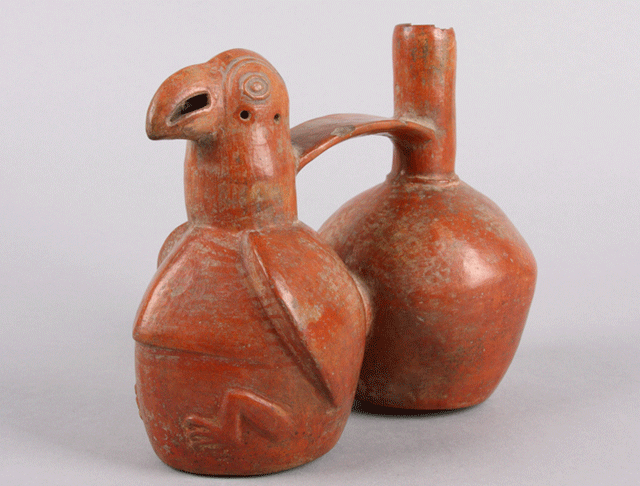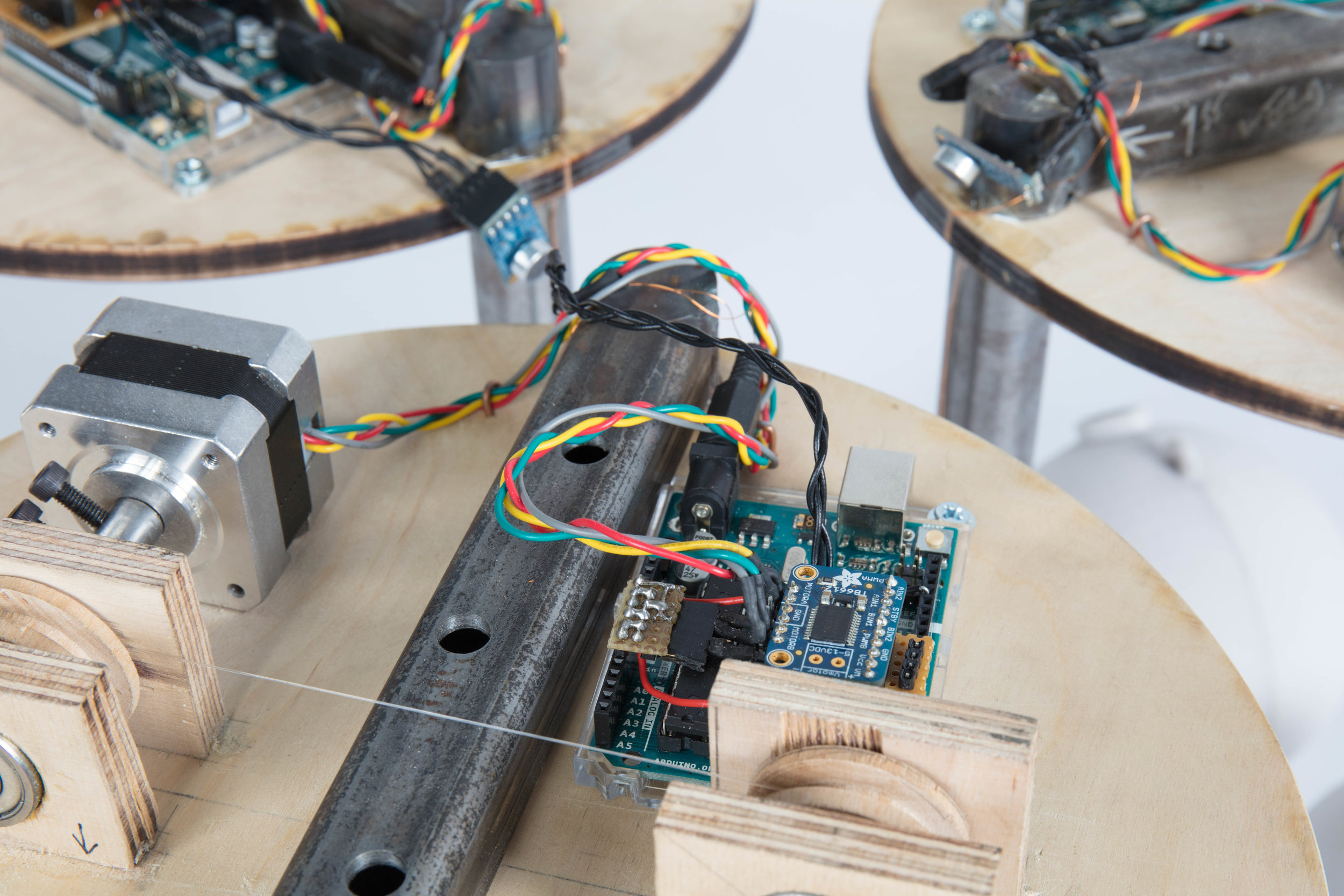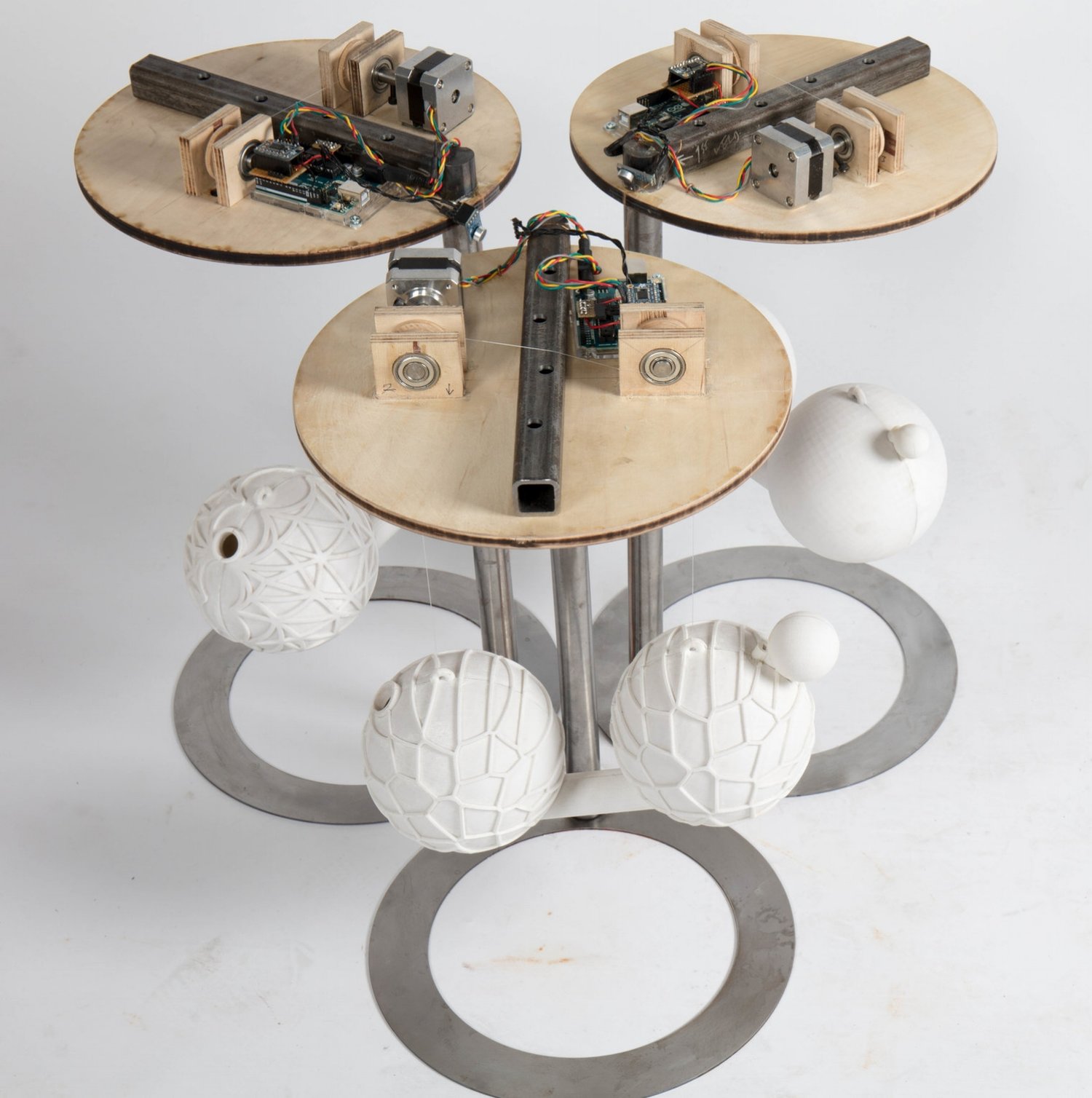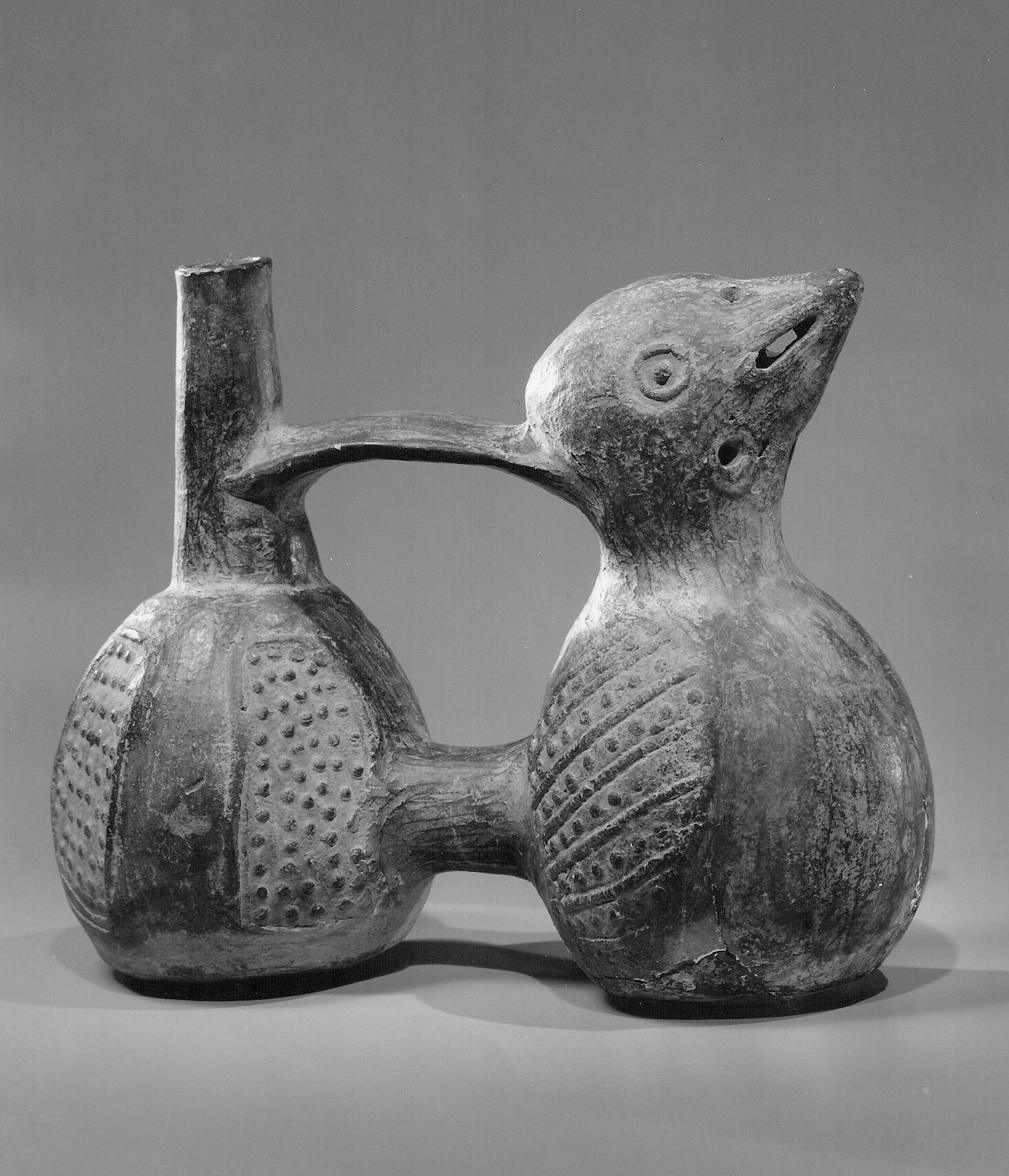01 FLOCK
DOC 234—34/2

AUTHOR: A.G.
KEYWORDS: Emergence, Instrument, Music, Complexity, 3D-printing, Parametric model, Algorithm
KEYWORDS: Emergence, Instrument, Music, Complexity, 3D-printing, Parametric model, Algorithm
Peruvian water whistles are one of the oldest instruments that can be found in America. The craft knowledge of making them has been handed down from generation to generation. The basic working principle is relatively simple; there are two chambers that contain water. When the instrument is tilted the water flows from one chamber into the other through a connecting pipe, pushing air out of a whistle. The key to making Peruvian water whistle function properly is ensuring the ratios between the dimensions are right, however there is however hardly any documentation on how they work.
Use of a parametric model in combination with 3D printing technology enabled the successful reverse engineering of this ancient instrument. The resulting water whistle was fitted with connective system that enabled counterpart whistles to be triggered in accordance with an algorithm, resulting in emergent, higher-order complexity.
![]()
Use of a parametric model in combination with 3D printing technology enabled the successful reverse engineering of this ancient instrument. The resulting water whistle was fitted with connective system that enabled counterpart whistles to be triggered in accordance with an algorithm, resulting in emergent, higher-order complexity.



